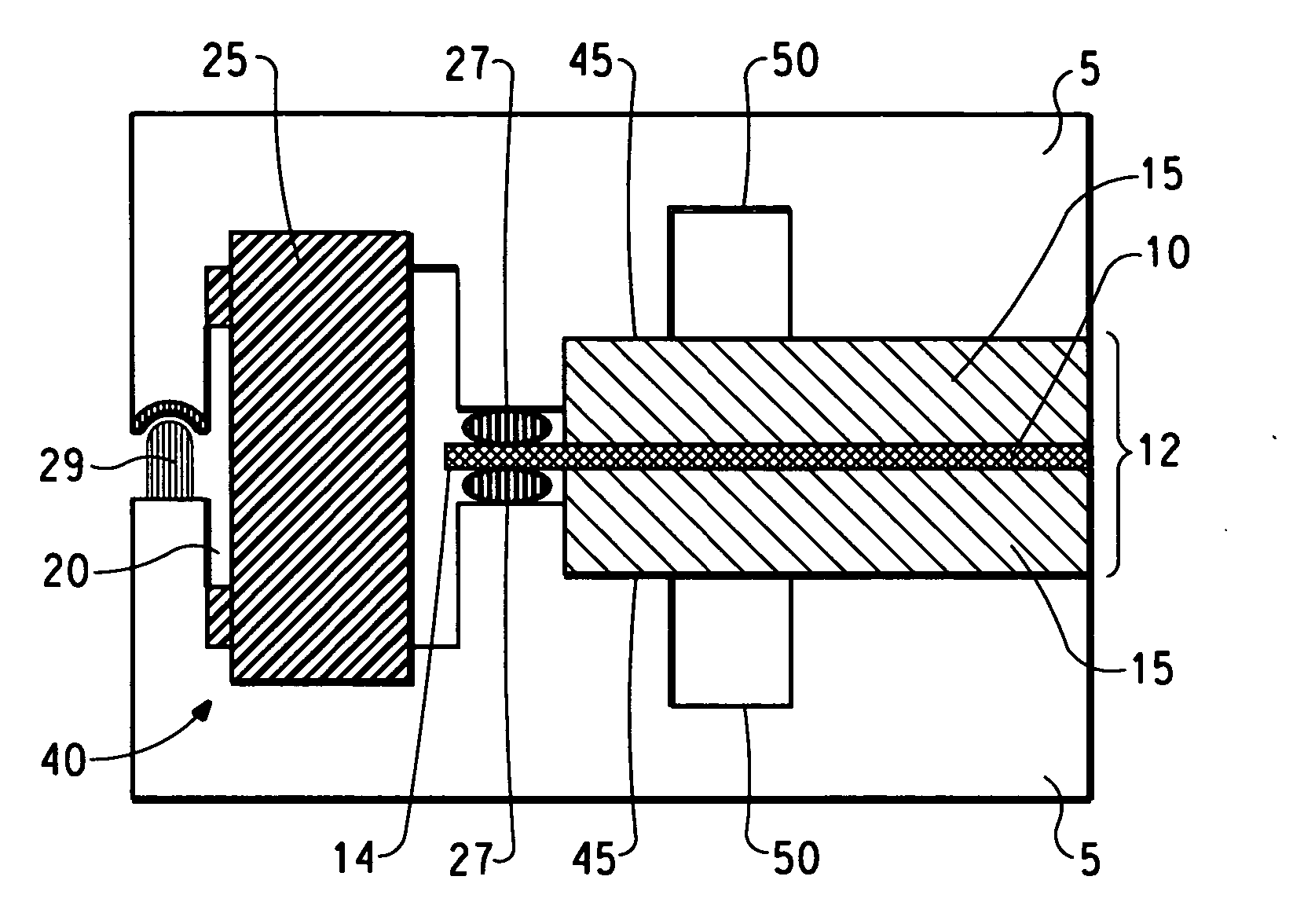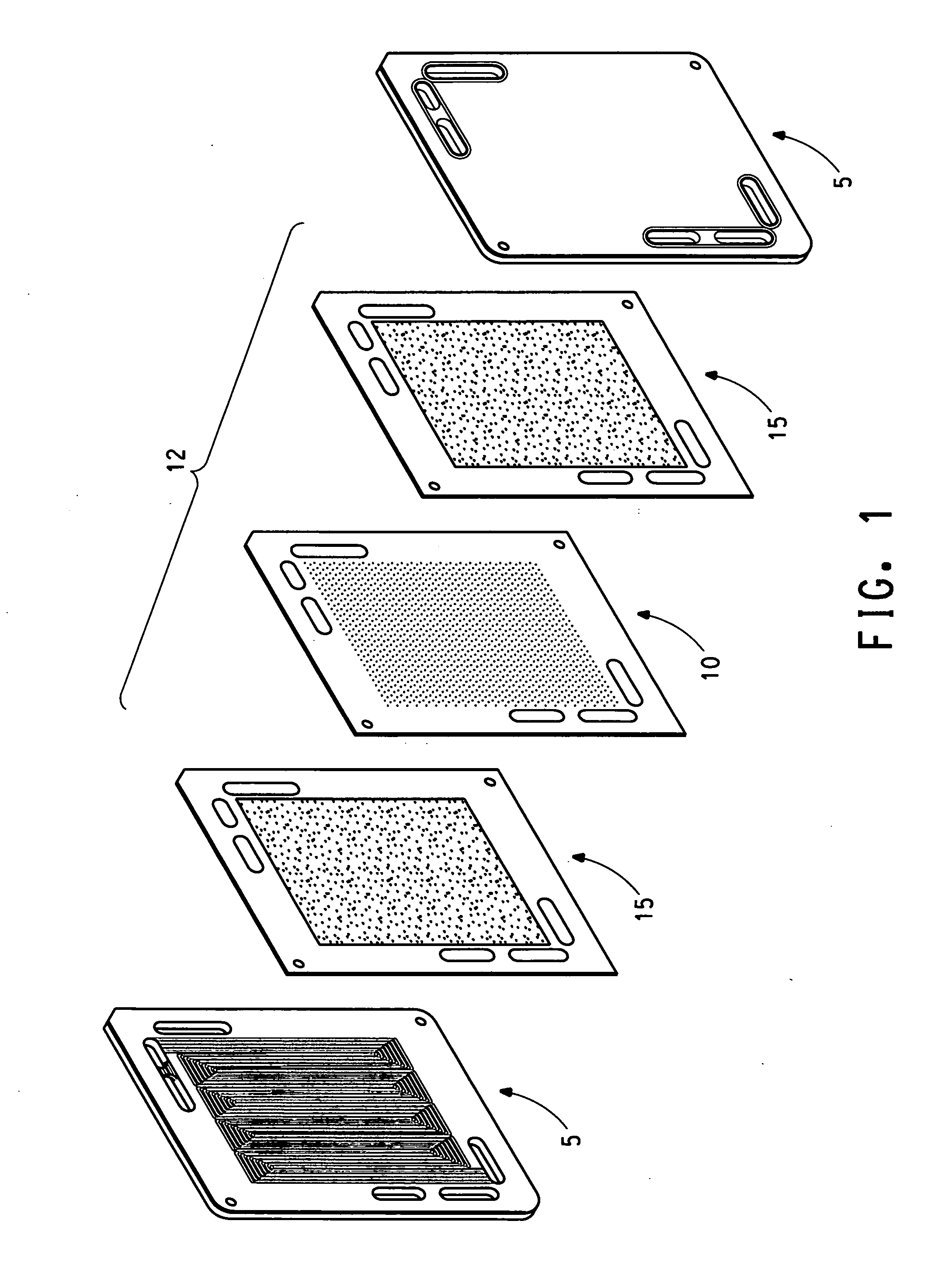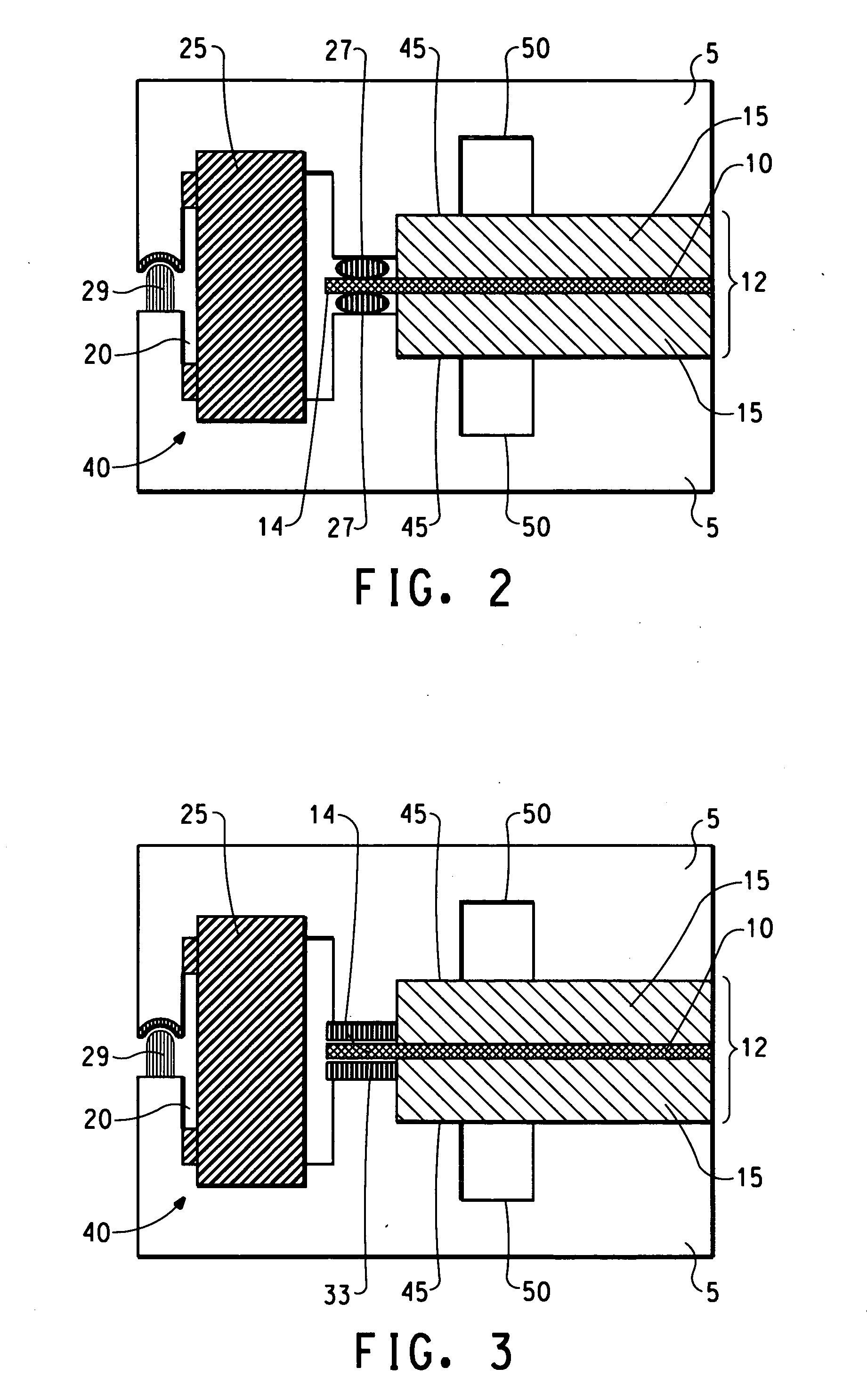Unitized electrochemical cell sub-assembly and the method of making the same
a technology of electrochemical cells and sub-assemblies, which is applied in the direction of cell components, final product manufacturing, sustainable manufacturing/processing, etc., can solve the problems of reducing the performance of the electrochemical cell, metal ion contamination, and exposure of the membrane edge to ambient air
- Summary
- Abstract
- Description
- Claims
- Application Information
AI Technical Summary
Benefits of technology
Problems solved by technology
Method used
Image
Examples
example 1
[0082] A unitized cell was prepared by sandwiching a membrane electrode assembly (MEA) between two identical square pieces of composite plate parts comprising 25% Zenite® liquid crystal polymer resin, 55% Thermocarb® graphite powder and 20% graphite fibre. The parts had a length of 86.36 mm, width of 86.36 mm and a thickness of 1.78 mm. Recessed central areas having a length of 76.2 mm, a width of 76.2 mm and a depth of 0.127 mm were provided within both plate parts to accommodate the gas diffusion layers. An additional area of 5 mm around the perimeter of the recessed central areas was provided to be used as a sealing area. The composite plate parts were provided with corresponding holes at one corner of the plates to be used as a gas inlet or outlet for conducting the leak test of the unitized assembly. The diameter of the holes was 4.57 mm and they were each located at a distance of 12.7 mm away from both sides of the plates.
[0083] Two picture frame gaskets of 5.08 mm width of B...
example 2
[0091] A unitized cell was prepared using the tool and process described in Example 1 with the following exception: porous Kevlar® gaskets were placed between the membrane and Bynel® gaskets to prevent short circuit in the unitized assembly. The Kevlar® gaskets were cut with the same dimension as the Bynel® gaskets and were placed right below and above the Nafion® membrane. During the hot pressing process the molten Bynel® impregnated the porous matrix of Kevlar® and sealed it against Nafion® membrane.
PUM
| Property | Measurement | Unit |
|---|---|---|
| Pressure | aaaaa | aaaaa |
| Electrical conductor | aaaaa | aaaaa |
| aaaaa | aaaaa |
Abstract
Description
Claims
Application Information
 Login to View More
Login to View More - R&D
- Intellectual Property
- Life Sciences
- Materials
- Tech Scout
- Unparalleled Data Quality
- Higher Quality Content
- 60% Fewer Hallucinations
Browse by: Latest US Patents, China's latest patents, Technical Efficacy Thesaurus, Application Domain, Technology Topic, Popular Technical Reports.
© 2025 PatSnap. All rights reserved.Legal|Privacy policy|Modern Slavery Act Transparency Statement|Sitemap|About US| Contact US: help@patsnap.com



